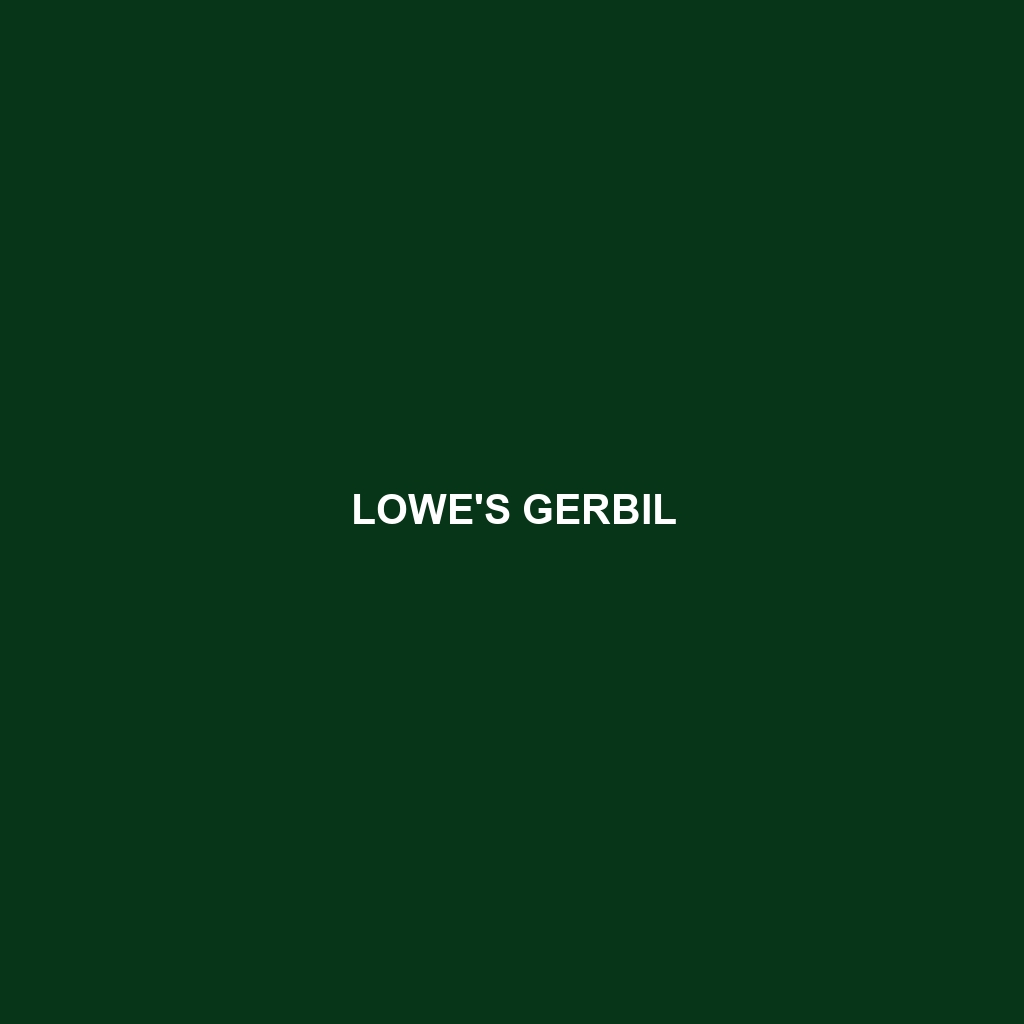Lowe’s Gerbil: A Comprehensive Species Description
Common Name: Lowe’s Gerbil
Scientific Name: Gerbillus lowei
Habitat
Lowe’s Gerbil is primarily found in the arid regions of Northern Africa, particularly in Morocco and Algeria. This species thrives in sandy deserts and semi-desert areas, often inhabiting areas with sparse vegetation where it can easily burrow and forage for food.
Physical Characteristics
Lowe’s Gerbil typically measures about 10 to 12 centimeters in body length, with a tail that can be as long as its body. These gerbils possess a sandy-brown fur coat, well-adapted to blend into their desert environment. Their small, rounded ears and large black eyes are distinctive features that enhance their sensory perception.
Behavior
This species exhibits nocturnal behavior, being most active during the night when temperatures are cooler. Lowe’s Gerbils are highly social creatures, often living in small colonies. They engage in intricate burrowing behaviors, creating elaborate tunnel systems that provide shelter from predators and extreme temperatures.
Diet
Lowe’s Gerbil primarily feeds on a diet consisting of seeds, grains, and various plant materials. They are also known to consume insects and small invertebrates, which adds protein to their diet. Their feeding habits typically involve foraging during the cooler hours of the night.
Reproduction
The breeding season for Lowe’s Gerbils generally occurs in the spring and summer months. After a gestation period of about 24 to 26 days, females give birth to litters of 3 to 6 young. These offspring are born blind and hairless but develop rapidly, often weaning after just a few weeks.
Conservation Status
Currently, Lowe’s Gerbil is not listed as endangered, but its habitat faces pressures from climate change and human activity. It is essential to monitor this species as its population could become threatened if habitat loss continues.
Interesting Facts
One fascinating aspect of Lowe’s Gerbil is its ability to survive with minimal water intake. This adaptability allows them to extract moisture from the seeds and plants they consume, making them well-suited for life in harsh desert environments.
Role in Ecosystem
Lowe’s Gerbil plays a crucial role in its ecosystem by serving as both a herbivore and a prey species. Its burrowing activities help aerate the soil and promote healthy plant growth, while it serves as a food source for larger predators such as snakes and birds of prey. Their presence contributes to the biodiversity of the desert environments they inhabit.
